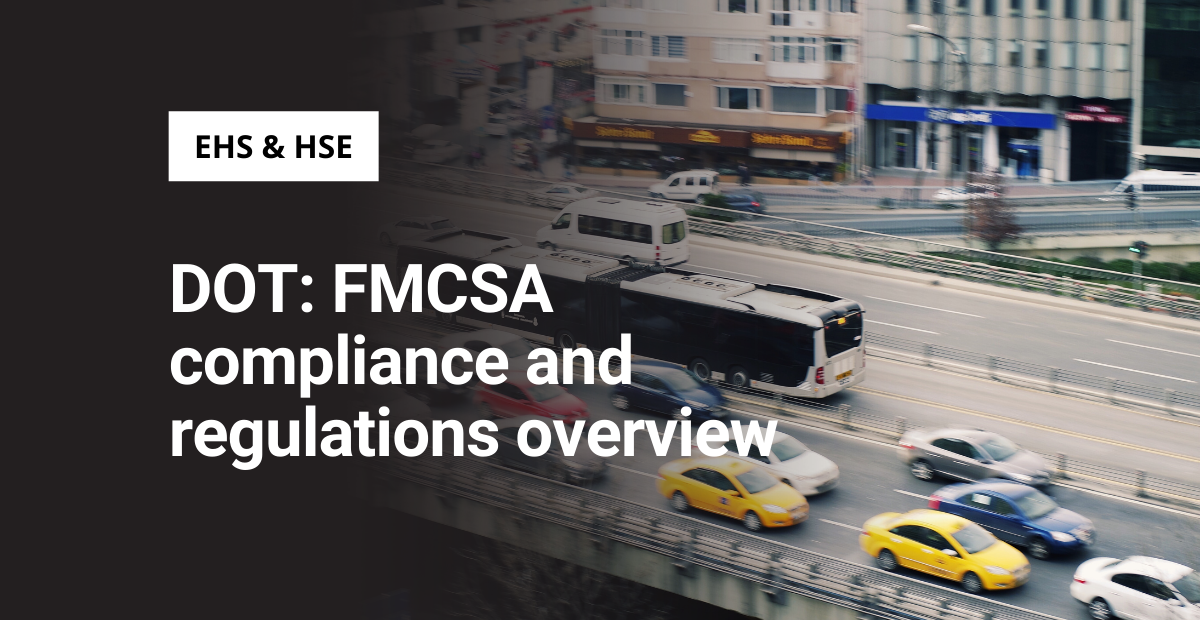The Department of Transportation (DOT) regulates driving over public highways and the transportation of hazardous materials within or between states. The DOT also regulates the roadworthiness of trucks and trailers and has specific requirements for the safe operation of trucks.
In addition, an agency under the DOT includes the Federal Motor Carrier Safety Administration (FMCSA), which works to prevent commercial motor vehicle-related injuries.
FMCSA regulations pertain to driver safety, equipment and permitting requirements for commercial motor vehicles (CMVs), and safety ratings.
FMCSA compliance for motor carriers
A motor carrier is an entity that transports passengers or property for compensation. To ensure that the motor carrier is compliant with regulations and operates safely, a safety fitness standard developed and used by the FMCSA lays out rules and regulations for managing requirements.
This standard states that the carrier must show that safety management controls are being used effectively. Adequate controls will reduce unsafe vehicle operation, improper repair and/or maintenance, hiring unqualified drivers, not keeping accident registers or reports, or violation of transportation of hazardous materials.
The FMCSA requires that anyone certified or wanting to become certified perform compliance reviews, safety audits, roadability reviews, or roadside inspections concerning the safety fitness standard, undergo periodic quality-control and training requirements.
Then, based on the availability and use of safety management controls and the frequency and severity of regulatory violations, the FMCA will assign a safety rating to the motor carrier. A safety rating or rating means a rating of ‘Satisfactory,’ ‘Conditional,’ or ‘Unsatisfactory.’
A satisfactory rating is when a motor carrier’s safety management controls are effective and meet a section of the safety fitness standard. If motor carriers are rated unsatisfactory, they are usually prevented from using CMVs.
However, you can take corrective actions to change a rating if a FMCSA completes a review and determines you’re compliant.
Reviews and audits for FMCSA compliance
What is the difference between the different reviews and audits the FMCSA uses to develop safety ratings? A roadability review is an examination on-site of the motor carrier equipment provider to assess regulatory compliance.
In contrast, a compliance review is an on-site examination of motor carrier operations. These reviews could include:
- Reviewing driver qualification
- Commercial drivers license requirements
- Maintenance and inspection logs
- Financial responsibility
- Accidents
- Hazardous materials compliance
Frontline ACT software for action tracking
Our action tracking software makes documenting EHS activities simpler than ever.
On the other hand, FMCSA can complete a compliance review to investigated potential violations. These typically happen as the result of:
- A request to modify a safety rating
- A response to complaints or evidence of safety violations
Compliance reviews may result in enforcement actions against carriers. During a safety audit, an FMCSA individual investigates a motor carrier’s operations. Then, they provide educational and technical help on safety and operational requirements.
The safety audit may also gather safety data needed to assess the carrier’s safety management controls and safety performance. Safety ratings are not the results of safety audits.
Requirements for new motor carriers
If you want to initiate interstate commerce or operations, contact FMCSA to register and obtain a USDOT number and operating authority. This is if you’re a for-hire business.
After the carrier completes all requirements and gets a notice of new registration from the FMCSA, it will undergo three months of review.
The safety audits are pass/fail, and failures can result in 45-day or 60-day corrective action requirements. There are 16 regulations relating to safety management practices that will result in an automatic failure of a safety audit, listed in Table § 385.321. A common violation includes employing unfit or unqualified drivers.
Safe operation of CMVs
To ensure that employees of the motor carrier and CMV drivers remain as safe as possible when operating or performing maintenance on CMVs, minimum standards have been established for the hours of service of drivers, motor vehicle inspection, repair, and maintenance, and employee safety and health.
In general, the maximum driving time for vehicles with property cargo is 13 hours total after ten consecutive hours of off-duty time. The maximum driving time for vehicles carrying passengers is 12 hours after eight consecutive hours of off-duty time.
Motor carriers must oversee or personally inspect, repair, and maintain vehicles and equipment in operation and remove them from service if necessary. Steps, handholds, and deck plates must be provided in the cabs and rear portions high-profile (defined as having the door sill step above the height of the front tires) cab-over-engine trucks.
Hazardous materials, safety permits, and transport
The transport of any hazardous materials requires a safety permit. The carrier must follow additional requirements and procedures to transport hazardous materials in commerce. The definition of hazardous materials, substances, or wastes are those that have the potential to pose an “unreasonable risk to health, safety, and property when transported.”
FMCSA requires motor carriers to hold a safety permit for transport of radioactive material, more than 25 kilograms (55 pounds) of explosives requiring placarding, more than one liter per package of a ‘material poisonous by inhalation,’ or compressed or refrigerated liquified methane or natural gas in a capacity equal to or above 13,248 liters (3,500 gallons).
After applying for a safety permit and receiving and keeping the permit, the motor carrier must comply with relevant regulations and obtain a ‘Satisfactory’ safety rating. Existing safety permits are valid for two years unless suspended or revoked.
When transporting hazardous materials, a copy of the permit containing the permit number and a written route plan for transporting the permitted material, along with the phone number of an employee that knows the route, must be placed in the CMV so that officials can access the documents.
Other posts you might like…
No posts
